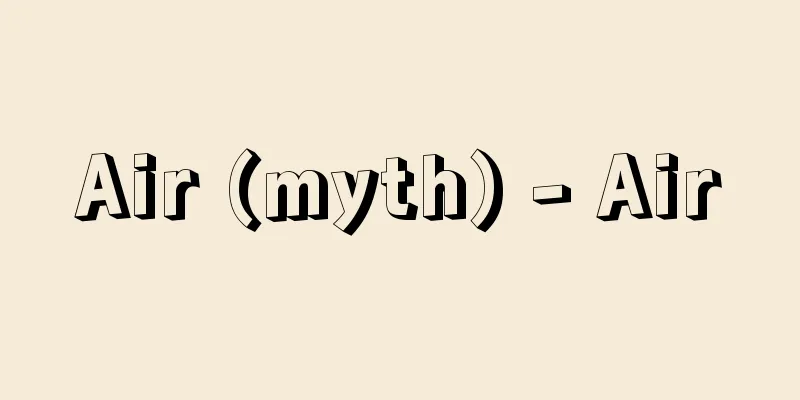Bohemia (English spelling)

|
The English pronunciation of the historical name for the western part of the Czech Republic. The eastern part of the republic is called Moravia. In Czech it is called Čechy. In German it is called Böhmen. It is located almost in the center of Europe, surrounded by Austria, Germany, Poland, and the Moravia region (Czech name Morava). It has an area of just over 50,000 square kilometers and a population of about 6.12 million (2001). Geographically, it is generally a highland with many ups and downs, and the center is low, surrounded by mountain ranges such as the Sudety (German name Sudeten) Mountains (Krkonoše and Orlické Hori mountain ranges) in the northeast, the Erz Mountains (Krušine Hori) in the northwest, the Bohemian Forest (hilly area called Český Les and the Šumava Mountains) in the southwest, and the Czech Moravian (Bohemia-Moravian) Uplands in the south, forming a basin. The Vltava River (German: Moldau) flows from south to north through the center of the basin, and joins the Labe River (German: Elbe) in the north. The highest peak is Mount Snezhka (1,603 meters) in the Sudety Mountains. The Labe River basin has fertile soil, and wheat and sugar beets are cultivated. The northern mountainous region is rich in precious metals and has been developed since ancient times, forming the driving force behind Bohemia's traditional industrial development. Prague, the capital of the Czech Republic, is located in the middle reaches of the Vltava River. Bohemia is also home to other cities that lead the Czech Republic's commerce and industry, such as Plzen, Hradec Kralove, Liberec, and České Budejovice, as well as Karlovy Vary, famous for its hot springs. The climate is mildly continental, with an average annual temperature of 7.9°C in Prague (-1.9°C in January, 17.5°C in July) and an average annual precipitation of 533 mm (21 mm in January, 72 mm in July). The vegetation is mixed forest and coniferous forest, changing to mountain grassland above 1,200-1,400 meters. Mineral resources include iron ore, polymetallic ores, coal, porcelain clay, and graphite, and there are also mineral springs. It is the central region of the Czech Republic, where both agriculture and industry are developed. [Tsuyoshi Inano] historyThe origin of the word Bohemia is the Greek word Boioi and the Latin word Boii, which is the name of one branch of the Celts. They migrated to present-day Bohemia from Southwest Germany in the 4th century BC through the area between the Main and Danube rivers. The German word Boemen means "home of the Boii". They left the area around 60 BC due to the oppression of the Germanic peoples, and the Boii who remained in Bohemia were subordinate to the Germanic Marcomanni in 10 BC, but the Germanic peoples also left Bohemia during the Migration Period, and the West Slavs eventually advanced there. In the 9th century, Bohemia was part of the Kingdom of Moravia, but after the collapse of the kingdom, the Czech ethnic dynasty, the Přemysl family, began to form its own nation. Eventually, Bohemia pledged allegiance to the Holy Roman Emperor in order to compete with neighboring countries such as Germany and Hungary, and was elevated to a kingdom in 1156. The Kingdom of Bohemia subordinated the Margraviate of Moravia and the Duchy of Silesia to form the Czech states, and was the center of them. In the second half of the 13th century, its territory once reached from the Adriatic Sea to the North Sea. Furthermore, in the mid-14th century, the Bohemian king of the Luxembourg dynasty became the Holy Roman Emperor, making Bohemia the most powerful country in Central Europe, and its capital, Prague, became the center of the Central European Renaissance. The background to this development of Bohemia was the flourishing of German colonization of the East in the 14th century. In response to the active colonization policy of the Bohemian kings, German farmers, craftsmen, and citizens who settled mainly in the north, northwest, and west of Bohemia and in northern Moravia engaged in land reclamation, urban construction, and mine development, and had a great impact on the economic and cultural development of Bohemia. In response to the formation of a German ruling class in Bohemia and the expansion of power through the protection of the church by the kings and princes, the Hussite Reformation and the subsequent Hussite Wars occurred in the 15th century. In the 16th century, the expansion of Turkish power in Central Europe led to the Bohemian throne being handed over to the Austrian Habsburgs, but as their rule strengthened in parallel with the Catholicization of Bohemia, the Protestant Czech nobles in Bohemia resisted, and the struggle between the two sides led to the Thirty Years' War, which engulfed Europe in conflict in the first half of the 17th century. The Czech nobles were defeated in this war, and although the Kingdom of Bohemia formally continued to exist until 1918, Bohemia essentially became a dependency of the Habsburgs and was subject to Germanization. In other words, after the dissolution of the Holy Roman Empire in 1806, Bohemia became part of the newly established Austrian Empire (established in 1804, since 1867 the Austro-Hungarian Empire), and also belonged to the German Confederation formed in 1815. Since the end of the 18th century, under the influence of the Enlightenment and German Romanticism, a national revival movement was started by Czech and Slovak liberal intellectuals, the center of which was Bohemia, and in 1848 the Slavic National Congress was held in Prague. However, when Austria established a dual monarchy with Hungary in 1867, the ethnically inferior Czechs in Bohemia took the lead among the Slavic peoples who were dissatisfied with Austrian policies, and rose to prominence with the development of ethnic capital. As a result, the conflict with the German forces that had dominated Bohemia for a long time became more acute. In 1918, at the end of World War I, when the Austro-Hungarian Empire collapsed, the Kingdom of Bohemia, Silesia, Moravia, and Slovakia were united to form the Czechoslovak Republic. Then, on January 1, 1993, the Czech Republic and Slovakia separated and became independent. As a result, Bohemia became the central region of the Czech Republic again. [Tsuyoshi Inano] "A History of Czechoslovakia" by Pierre Bonheur, translated by Yamamoto Toshiro (Hakusuisha, Que sais-je Bunko)" ▽ "A Modern History of Hungary and Czechoslovakia" by Yada Toshitaka (1978, Yamakawa Publishing)" ▽ "Royalty and Nobility" by Satsuma Hideto (1991, Japan Editors School Publishing Division)" ▽ "The Division and Integration of Central Europe: Masaryk and the Founding of Czechoslovakia" by Hayashi Tadayuki (Chuko Shinsho)" ▽ "A History of Danube Europe, edited by Minamizuka Shingo (1999, Yamakawa Publishing)" [References] | | | | | | | | | | | |Source: Shogakukan Encyclopedia Nipponica About Encyclopedia Nipponica Information | Legend |
|
チェコ共和国西部をさす歴史的名称の英語読み。同共和国東部はモラビアと称する。チェコ語ではチェヒČechy。ドイツ語ベーメンBöhmen。ヨーロッパのほぼ中央に位置し、周囲をオーストリア、ドイツ、ポーランド、モラビア(チェコ語名モラバ)地方に囲まれている。面積5万平方キロメートル強、人口約612万(2001)。地理的には、全体的には起伏に富んだ高地で、中央部が低く、周りを北東部のスデティ(ドイツ語名ズデーテン)山脈(クルコノシェとオルリツケー・ホリの各山地からなる)、北西部のエルツ山脈(クルシネ・ホリ)、南西部のボヘミアの森(チェスキー・レスとよばれる丘陵地とシュマバ山地からなる)、南部のチェコモラバ(ボヘミア・モラビア)高地といった山地で囲まれ、盆地状になっている。盆地の中央部を南から北へブルタバ(ドイツ語名モルダウ)川が流れ、北部でラベ(ドイツ語名エルベ)川と合流する。最高峰はスデティ山脈のスネジカ山(1603メートル)。ラベ川流域は肥沃(ひよく)な土壌で、小麦、ビート(テンサイ)栽培が行われている。北部山岳地帯は貴金属に富み、古くから開発が行われ、ボヘミアの伝統的な工業発展の原動力をなしている。ブルタバ川中流域にチェコの首都プラハがある。ボヘミアにはほかにプルゼニ、フラデツ・クラロベ、リベレツ、チェスケー・ブデヨビツェなどチェコの商工業をリードする都市や、温泉で名高いカルロビ・バリなどがある。気候は弱い大陸性で、プラハでは年平均気温7.9℃(1月零下1.9℃、7月17.5℃)、年降水量533ミリメートル(1月21ミリメートル、7月72ミリメートル)である。植生は混交林と針葉樹林地帯で、1200~1400メートル以上で山地草原となる。地下資源は鉄鉱、多金属鉱、石炭、磁土、黒鉛があり、鉱泉も出る。農業、工業ともに発展するチェコの中心地域となっている。 [稲野 強] 歴史ボヘミアの語源は、ギリシア語のボイオイ、ラテン語のボイイで、ケルト人の一分枝の名称である。彼らは前4世紀に西南ドイツ付近からマイン川、ドナウ川の中間地帯を通って今日のボヘミアに移住した。ドイツ語のベーメンは「ボイイ人の故郷」という意味。彼らはゲルマン人の圧迫により前60年ごろこの地を去り、ボヘミアに残ったボイイ人は前10年ゲルマン系のマルコマンニ人に従属したが、ゲルマン人も民族移動期にボヘミアの地を去り、やがて西スラブ人が進出した。ボヘミアは9世紀にはモラビア王国の一部であったが、王国の崩壊後、チェコ民族王朝プシェミスル家の手で独自の国家形成が開始された。やがてボヘミアはドイツ、ハンガリーなどの隣国との対抗上、神聖ローマ皇帝に臣従を誓い、1156年には王国に昇格した。ボヘミア王国はモラビア辺境伯領、シレジア公領を従属させてチェコ諸領邦を構成し、その中心をなした。13世紀後半にはその領土は一時アドリア海から北海に達するまでになった。さらに14世紀なかば、ルクセンブルク朝のボヘミア王は神聖ローマ皇帝となり、ボヘミアを中欧一の強国に押し上げ、首都プラハは中欧ルネサンスの中心となった。こうしたボヘミアの発展の背景には14世紀に隆盛を迎えたドイツ東方植民があった。ボヘミア諸王の積極的な入植政策に応じて、ボヘミア北、北西、西部、モラビア北部を中心に入植したドイツ人農民、職人、市民は、土地の開墾、都市建設、鉱山開発に従事し、ボヘミアの経済的、文化的発展に多大な影響を与えた。ボヘミアでのドイツ人支配層の形成、王侯の教会保護による権力拡大に対抗して、15世紀にはフスの宗教改革、それに続くフス戦争が起こった。16世紀、中欧へのトルコ勢力の伸長からボヘミアの王位はオーストリア・ハプスブルク家にゆだねられたが、その支配はボヘミアのカトリック化と並行して強化されたために、ボヘミアのプロテスタント派のチェコ人貴族が抵抗し、両者の戦いが17世紀前半にヨーロッパ中を戦乱に巻き込んだ三十年戦争を引き起した。この戦争でチェコ人貴族は敗北を喫し、形式的にはボヘミア王国は1918年まで存続するものの、実質的にはボヘミアはハプスブルク家の一属領に堕し、ドイツ化の浸透をみるに至った。すなわち1806年に神聖ローマ帝国解体後は新たに発足したオーストリア帝国(1804年成立、1867年よりはオーストリア・ハンガリー帝国)領となり、かつ1815年に形成されたドイツ連邦にも属した。 18世紀末以降、啓蒙(けいもう)主義、ドイツ・ロマン主義の影響下で、チェコ人、スロバキア人の自由主義的知識人たちを中心に民族復興運動が起こったが、その中心はボヘミアであり、1848年にはプラハでスラブ民族会議が開催されるに至った。だが1867年、オーストリアがハンガリーとの間で二重王国制を確立すると、民族的に劣勢に置かれたボヘミアのチェコ人は、オーストリアの政策に不満をもつスラブ系諸民族の先頭にたち、民族資本の発展を背景に台頭した。その結果、長い間ボヘミアを支配し続けてきたドイツ人勢力との対立が先鋭化していった。第一次世界大戦終了時の1918年、オーストリア・ハンガリー帝国が解体すると、ボヘミア王国領はシレジア、モラビアとともにスロバキアと合体してチェコスロバキア共和国を建設した。そして93年1月1日にチェコとスロバキアは分離・独立した。その結果、ボヘミアはふたたびチェコの中心地域となった。 [稲野 強] 『ピエール・ボヌール著、山本俊朗訳『チェコスロヴァキア史』(白水社・文庫クセジュ)』▽『矢田俊隆著『ハンガリー・チェコスロバキア現代史』(1978・山川出版社)』▽『薩摩秀登著『王権と貴族』(1991・日本エディタースクール出版部)』▽『林忠行著『中欧の分裂と統合――マサリクとチェコスロヴァキア建国』(中公新書)』▽『南塚信吾編『ドナウ・ヨーロッパ史』(1999・山川出版社)』 [参照項目] | | | | | | | | | | | |出典 小学館 日本大百科全書(ニッポニカ)日本大百科全書(ニッポニカ)について 情報 | 凡例 |
>>: Pobedonostsev, Konstantin Petrovich
Recommend
Eurasia - Eurasia (English spelling)
The term used when both Asia and Europe are consi...
Emergency rice field - Emergency rice field
Also called shukyuden or shingoden, these were ric...
Data flow computer
Unlike conventional computers that execute instruc...
La Venta (English spelling)
The remains of the Olmec culture are found in the ...
Alert - keiho
〘 noun 〙 To warn people to be on alert when danger...
History of famous paintings - History of famous paintings
China's first full-scale painting history boo...
itch mite
This mite belongs to the Arthropoda phylum, Arach...
Bantaro - Bantaro
〘Noun〙① = Banta (Banta) ※Kanazoshi, Usou-soshi (16...
Decorator - Decorator
A craftsman whose main job was decoration, also kn...
musālim (English spelling)
...In time, the number of Muslims increased due t...
Münsterberg - Hugo Münsterberg
A psychologist active in Germany and the United S...
Kinkenchochikukai - thrift savings association
...The basis of this movement was to focus on the...
Quinacridone pigment - Quinacridone pigment
A type of high-grade organic pigment recently deve...
Lacrimal gland
…The organ involved in the secretion and discharg...
《Female Seigen》 - Onna Seigen
...A domestic drama. Commonly known as Onna Seige...









